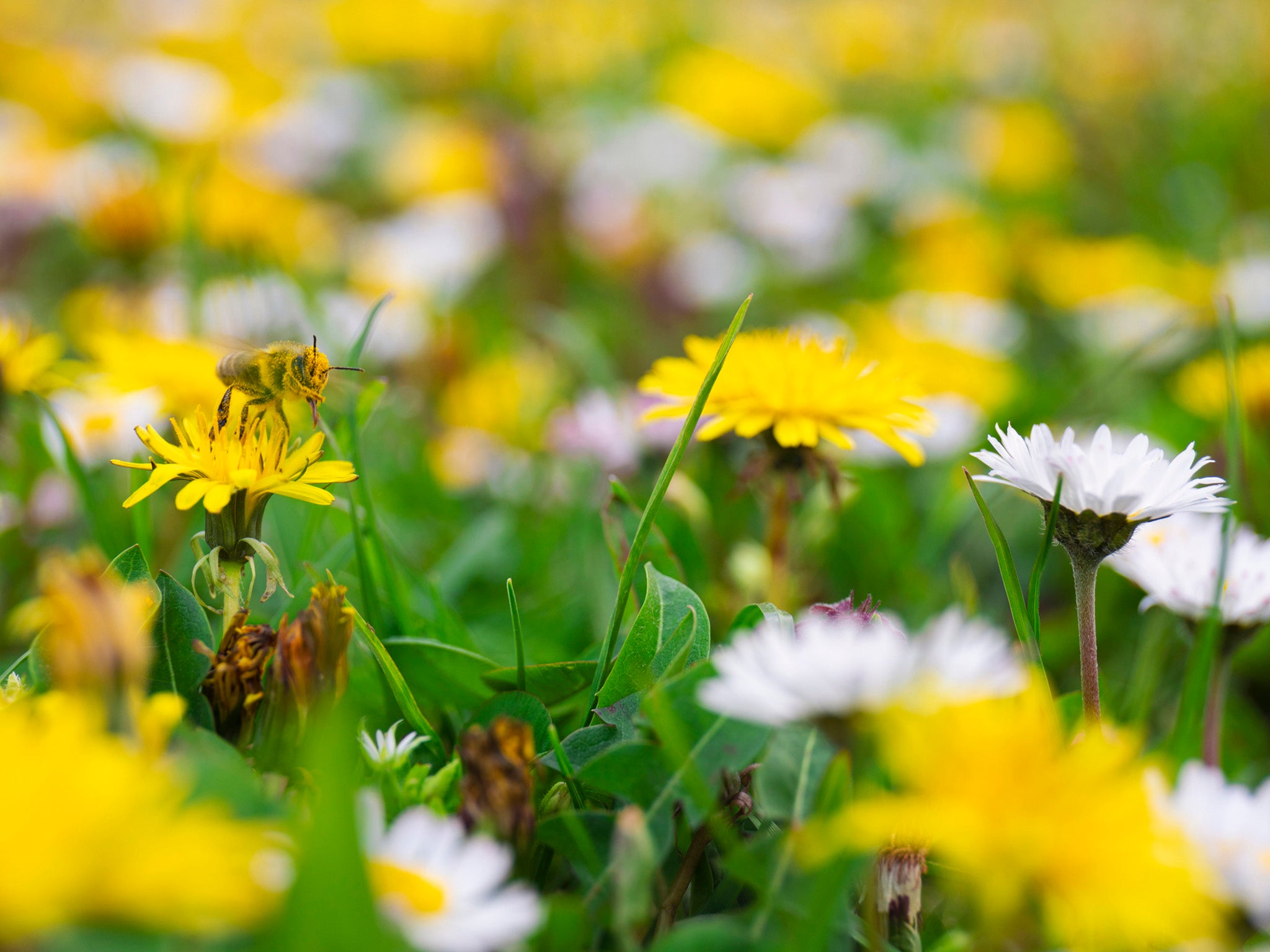Let the lawn go wild this month and allow wildflowers to bloom, gardeners told
Help the bees by doing ‘nothing for nature’, says Plantlife

Your support helps us to tell the story
From reproductive rights to climate change to Big Tech, The Independent is on the ground when the story is developing. Whether it's investigating the financials of Elon Musk's pro-Trump PAC or producing our latest documentary, 'The A Word', which shines a light on the American women fighting for reproductive rights, we know how important it is to parse out the facts from the messaging.
At such a critical moment in US history, we need reporters on the ground. Your donation allows us to keep sending journalists to speak to both sides of the story.
The Independent is trusted by Americans across the entire political spectrum. And unlike many other quality news outlets, we choose not to lock Americans out of our reporting and analysis with paywalls. We believe quality journalism should be available to everyone, paid for by those who can afford it.
Your support makes all the difference.Gardeners are being asked to "do nothing for nature" this May by leaving their lawns to grow to help bees and other wildlife.
Conservation charity Plantlife has launched the No Mow May campaign to allow wildflowers to bloom in gardens around the UK, providing more food for pollinators.
Towards the end of the month, gardeners can enter the Every Flower Counts survey, which records the number of flowers by species and pollen count.
The charity has warned of the impact of climate change on the nation's plantlife, with spring droughts devastating the wildflower blooms.
Last year, after the driest May since 1896, the Plantlife survey saw huge drops in the number of common spring flowers in gardens. Dandelions had declined by 56 per cent compared with 2019, and daisies by 40 per cent.
Dr Trevor Dines, a botanical specialist from Plantlife, said: “Along with the browning grass, Every Flower Counts provides evidence for the first time that spring drought periods affect the timing and quantity of flower production on lawns, as early flowers wilt and summer species bloom earlier.
"With ongoing climate change, this could have important implications for delicate plant-pollinator relationships – 56 per cent less dandelion flowers could have a serious impact on early emerging bumblebees for example - and these changes will be felt across other grassland habitats such as flower-rich meadows and road verges.”
Other species saw dramatic declines last May, including the germander speewell and bird’s-foot-trefoil.
Some high-nectar producing species, such as white and red clovers, bloomed early due to the heat, so the overall 19 per cent drop in flowers was not matched by the drop in nectar.
After a very dry April this year, the best thing to do for a lawn suffering drought is to allow the remaining flowers in the soil to grow, Dr Dines said, adding that a mix of wildflowers and plants is most effective.
“If you want to have a drought-resistant lawn you want a good mix of native plants because they will often have deeper roots that go down further and can tap into scant water resources,” he said.
![Germander speedwells [L] and bird’s-foot-trefoils were hit hard by last May’s drought](https://static.independent.co.uk/2021/04/30/17/Untitled-1.jpg)
Plantlife has also asked councils to leave parks and road verges to go wild in May. Highways England announced in December they were working to improve soil fertility on road verges to encourage the growth of wildflowers.
Dr Kate Petty, Plantlife's road verge campaign manager, said seven out of 10 councils were now working to encourage wildflowers on verges.
Of the 3,200 gardeners who took part in last year's Every Flower Counts survey, 36 per cent said they had left their lawn unmowed for the month, up from 15 per cent in 2019 and 21 per cent said they had not mowed all year.
Participants recorded 97 different species of pollinators on their lawns, including 21 different bees and 26 butterflies and moths.
The gardens left growing all year attracted the highest number of pollinators, with an average of 3 per square metre.
Britain's 15 million gardens could also be vital in combating the loss of flora seen down the last century.
On a single day in summer, an acre of wildflowers can contain 3 million flowers, enough to produce 1kg of nectar sugar, Plantlife said.
Wildflower meadows in the UK have declined by 97 per cent since the 1930s, with an area more than 1.5 times the size of Wales now lost.
Of the land lost, Plantlife found more than 90 per cent has been filled with grass and crops used in intensive farming, which supports a relatively miniscule number of plant species.
Subscribe to Independent Premium to bookmark this article
Want to bookmark your favourite articles and stories to read or reference later? Start your Independent Premium subscription today.
Join our commenting forum
Join thought-provoking conversations, follow other Independent readers and see their replies
Comments